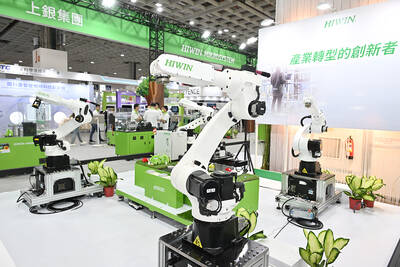Global retail giant Wal-Mart Stores, Inc and Indian firm Bharti yesterday said they were ending their partnership in the country’s retail sector and would now operate separate businesses.
The companies said in a joint statement that they would “discontinue their franchise agreement in the retail business” in India and would “independently own and operate separate business formats.”
Wal-Mart has said it wants to operate supermarkets in India after New Delhi moved last year to open up the retail sector to foreign companies in a bid to boost India’s sharply slowing economy.
However, the world’s biggest retailer has been frustrated by the government’s conditions for foreign investment, and the faltering relationship with Bharti, owner of India’s top mobile phone firm.
Wal-Mart has operated since 2007 in India as a wholesaler via its partnership with Bharti, but it is unable to sell directly to consumers.
Wal-Mart had said last year it wants to launch its first store in India within two years, but the company needs a local partner, and it has yet to make a proposal to the government for opening retail stores.
Wal-Mart said in July that it was unable to meet requirements stipulating that 30 percent of its products must come from local small-scale industries for it to open stores.
Last year, New Delhi allowed foreign supermarkets to establish 51 percent joint ventures in the country as part of the government’s drive to seek outside investment to boost the economy, but so far none has applied.
India’s opposition lawmakers in the past have expressed concern over Wal-Mart’s entry, saying it will hurt local “mom and pop” stores.
Under the terms of the breakup, Wal-Mart will acquire Bharti’s stake in the wholesale cash and carry business, giving it 100 percent ownership, the statement said.
“Given the circumstances, our decision to operate independently will be beneficial to both parties,” Wal-Mart Asia president and chief executive Scott Price said in the statement.
Price said Wal-Mart would “continue to advocate for investment conditions that allow FDI [Foreign Direct Investment] multi-brand retail in India.”

AI SERVER DEMAND: ‘Overall industry demand continues to outpace supply and we are expanding capacity to meet it,’ the company’s chief executive officer said Hon Hai Precision Industry Co (鴻海精密) yesterday reported that net profit last quarter rose 27 percent from the same quarter last year on the back of demand for cloud services and high-performance computing products. Net profit surged to NT$44.36 billion (US$1.48 billion) from NT$35.04 billion a year earlier. On a quarterly basis, net profit grew 5 percent from NT$42.1 billion. Earnings per share expanded to NT$3.19 from NT$2.53 a year earlier and NT$3.03 in the first quarter. However, a sharp appreciation of the New Taiwan dollar since early May has weighed on the company’s performance, Hon Hai chief financial officer David Huang (黃德才)

The Taiwan Automation Intelligence and Robot Show, which is to be held from Wednesday to Saturday at the Taipei Nangang Exhibition Center, would showcase the latest in artificial intelligence (AI)-driven robotics and automation technologies, the organizer said yesterday. The event would highlight applications in smart manufacturing, as well as information and communications technology, the Taiwan Automation Intelligence and Robotics Association said. More than 1,000 companies are to display innovations in semiconductors, electromechanics, industrial automation and intelligent manufacturing, it said in a news release. Visitors can explore automated guided vehicles, 3D machine vision systems and AI-powered applications at the show, along

FORECAST: The greater computing power needed for emerging AI applications has driven higher demand for advanced semiconductors worldwide, TSMC said The government-supported Industrial Technology Research Institute (ITRI) has raised its forecast for this year’s growth in the output value of Taiwan’s semiconductor industry to above 22 percent on strong global demand for artificial intelligence (AI) applications. In its latest IEK Current Quarterly Model report, the institute said the local semiconductor industry would have output of NT$6.5 trillion (US$216.6 billion) this year, up 22.2 percent from a year earlier, an upward revision from a 19.1 percent increase estimate made in May. The strong showing of the local semiconductor industry largely reflected the stronger-than-expected performance of the integrated circuit (IC) manufacturing segment,

NVIDIA FACTOR: Shipments of AI servers powered by GB300 chips would undergo pilot runs this quarter, with small shipments possibly starting next quarter, it said Quanta Computer Inc (廣達), which supplies artificial intelligence (AI) servers powered by Nvidia Corp chips, yesterday said that AI servers are on track to account for 70 percent of its total server revenue this year, thanks to improved yield rates and a better learning curve for Nvidia’s GB300 chip-based servers. AI servers accounted for more than 60 percent of its total server revenue in the first half of this year, Quanta chief financial officer Elton Yang (楊俊烈) told an online conference. The company’s latest production learning curve of the AI servers powered by Nvidia’s GB200 chips has improved after overcoming key component